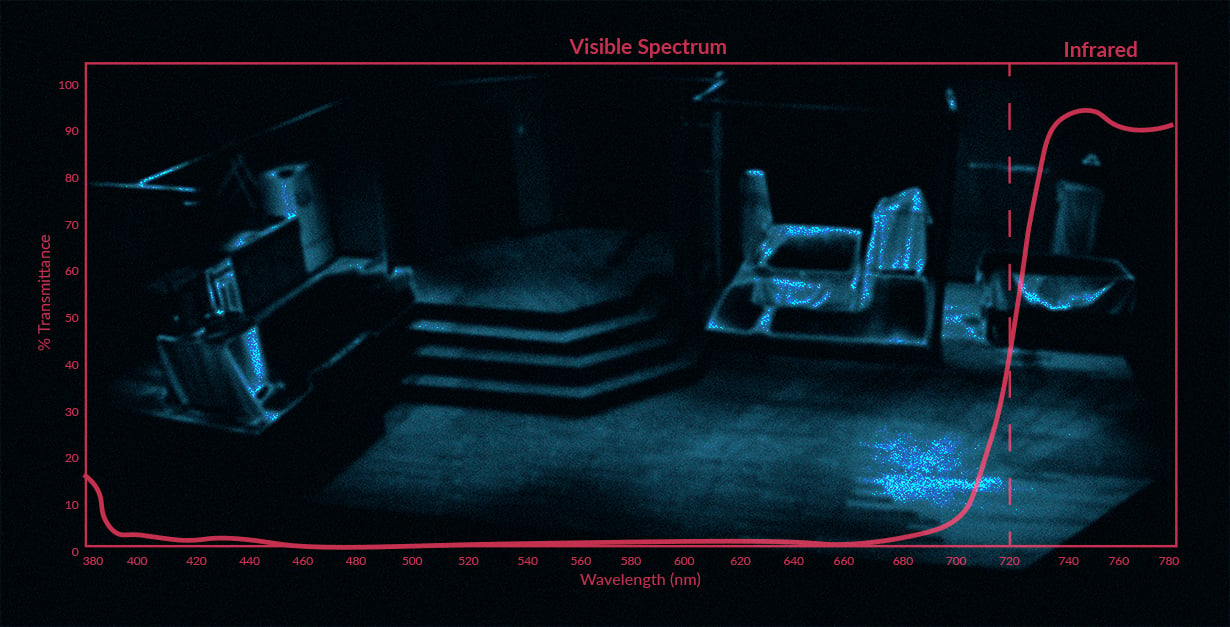Many performance venues have infrared cameras mounted front-of-house (FOH) so that the crew can monitor the action on stage during blackouts. Oftentimes, these cameras don’t perform very well because there isn’t very much infrared energy (IR) reflecting off the objects on stage for the thermal sensors in the IR camera to capture. Rosco’s Permacolor #7200 IR Pass Filter is designed to block all of the visible light from a light fixture and let just the infrared energy pass. If this dichroic glass filter is used on an IR-rich tungsten source, that fixture could be used to bathe the stage with infrared energy. That added infrared energy on stage can improve the detail in your IR monitor, which can help backstage and booth crew members see what’s happening on stage during a blackout.
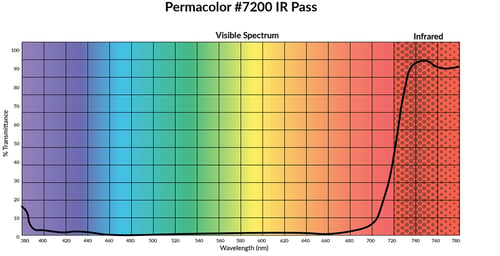 Click the graph to download the IR Pass filter data sheet.
Click the graph to download the IR Pass filter data sheet.
IR Pass Filter Vs. Infrared LED Lights
While there are infrared LED lights available that will work with IR cameras, many aren’t designed for the long throws needed inside a theater. Powerful, long-throw versions of these fixtures also exist, but they can be quite expensive. This IR Pass filter, however, is an affordable, dichroic glass solution that will work with the tungsten stage lighting equipment that most performance venues already own to improve their stage IR lighting conditions.
IR Cameras And Infrared Lighting On The Stage
Below are a few photos of an infrared stage setup that we captured from the booth to show how the IR Pass Filter works.
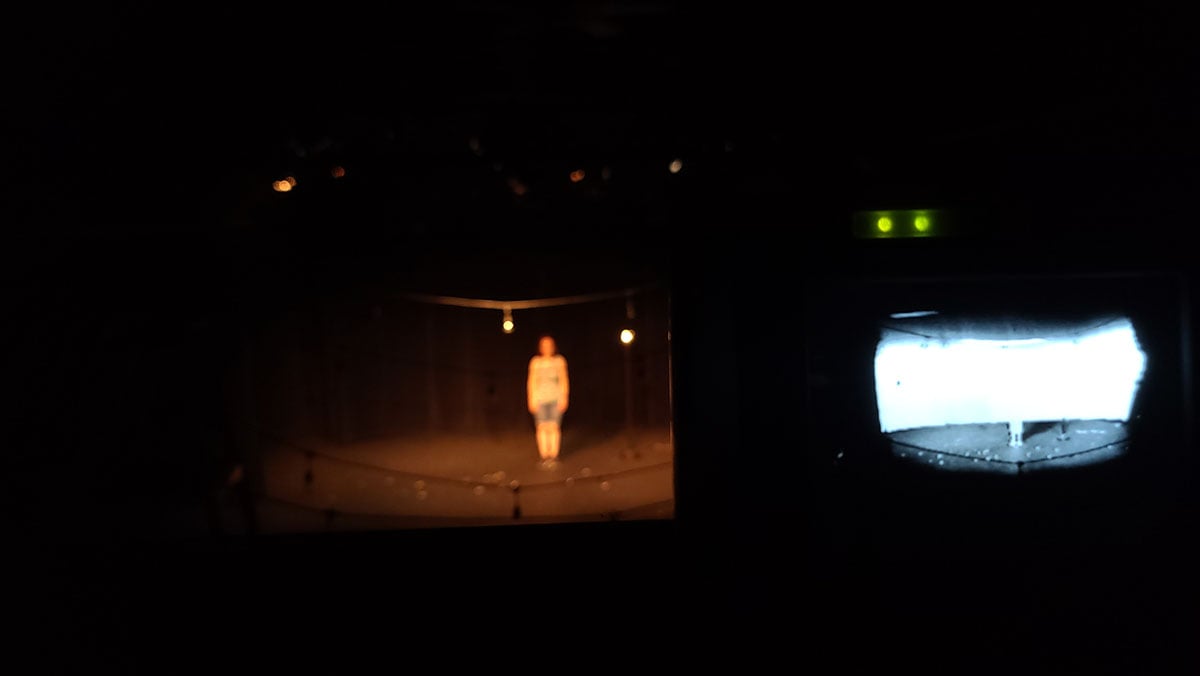
In this first photo, front wash lights illuminate the stage with the fixtures on at 30% intensity. From inside the booth, you can see the stage on the left and the IR monitor on the right. We focused the camera on the IR display, which is why the stage side is fuzzy, but note how blown-out the IR monitor is in this shot. That’s to be expected considering how much infrared from the stage lights is bombarding the IR camera.
And… Go Blackout
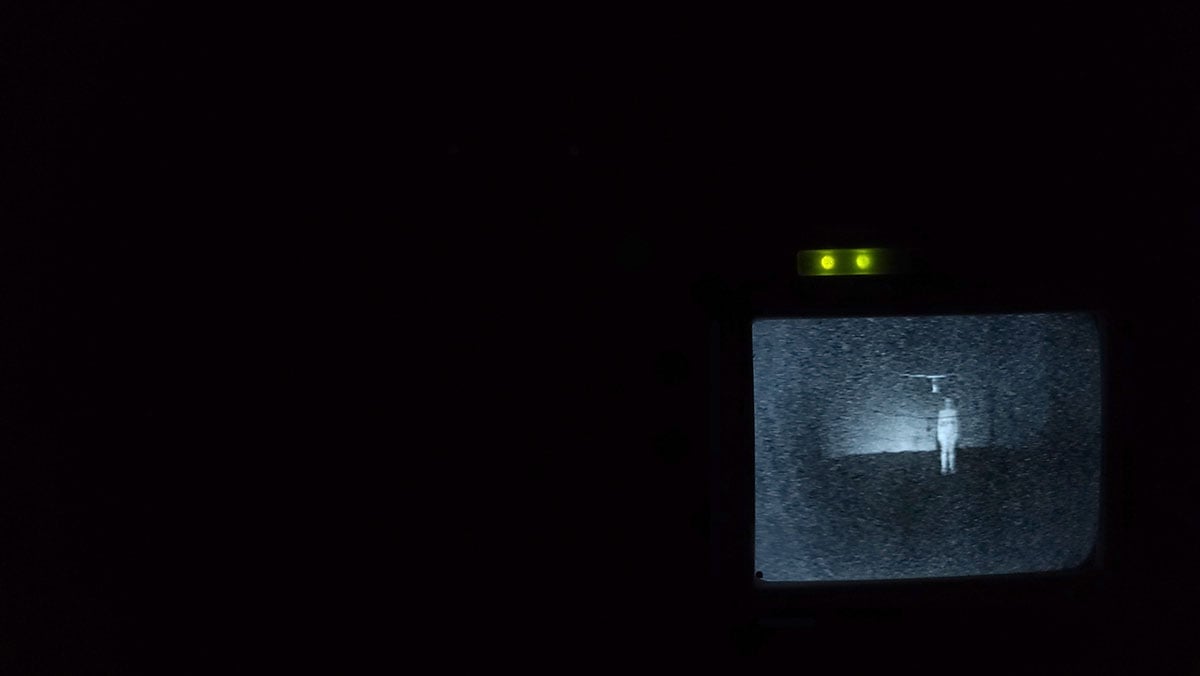
This photo shows the dark stage with all of the lights turned off except for the tungsten fixture that has the IR Pass filter, which is only on at 10% intensity. Note how little energy was needed. At only 10% we were able to produce a fairly crisp image on the monitor with quite a bit of detail. This is because there is directional infrared from the fixture reflecting straight back at the IR camera.
Our IR Lighting Setup
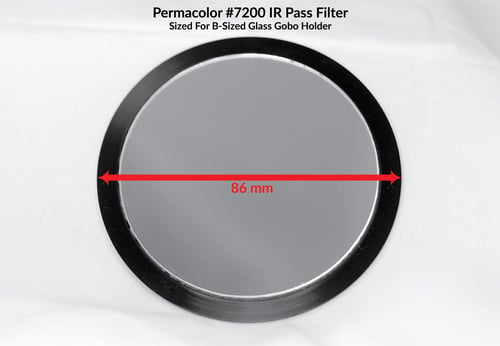
The light source we used was a Leviton LEO ellipsoidal with a 575W lamp and a 26° lens, which was hung FOH-center – very close to the IR camera – about 35 feet (10.7 meters) from the stage. The light source doesn’t have to be an ellipsoidal either. This stage lighting technique will work with any tungsten light. Using an ellipsoidal, however, did allow us to mount the IR Pass filter in an 86mm glass gobo bezel that we could insert into the fixture's gobo slot using a glass gobo holder. If we had used a tungsten Fresnel or PAR can, we would have needed a larger piece of glass and a dichroic color frame – but even that would have been less expensive than a long-throw IR LED fixture.
Don’t Over-Expose – Keep The Light Dimmed Down
![[11:33 AM] Joel Svendsen Photo of the stage in total blackout on the left and the IR monitor on the right beginning to blow out when the fixture with the IR Pass filter is raised to 30% intensity.](https://spectrum.rosco.com/hs-fs/hubfs/IR%20Pass%20Stage%20blog%20image%20Dont%20over%20expose%202021-07-05%2017.38.50.jpg?width=662&height=373&name=IR%20Pass%20Stage%20blog%20image%20Dont%20over%20expose%202021-07-05%2017.38.50.jpg)
This is the same shot as above, except now the fixture with the IR Pass Filter has been increased to 30%. More of the stage is visible on the IR monitor, but some of the details have been over-exposed, and are blowing out in the display. Experimenting with the intensity of the fixture is key to finding the proper IR exposure for your camera/display setup.
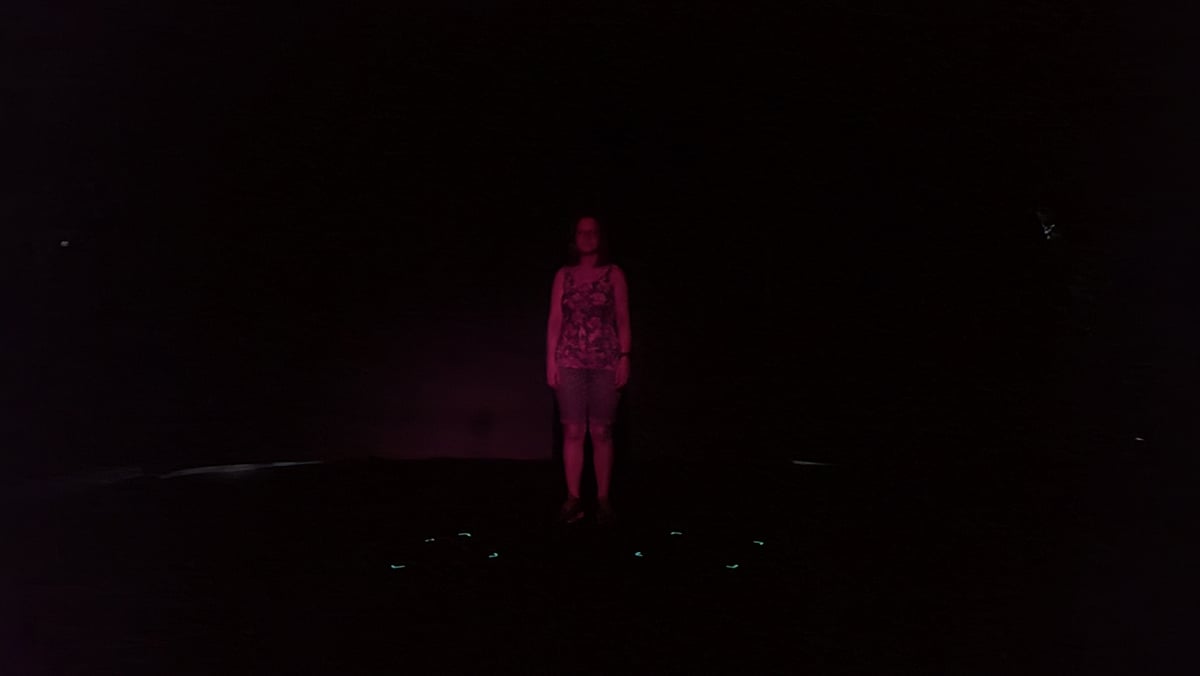
Be careful not to bring the intensity of your fixture up too high or your blackout with turn into a redout. While the #P7200 IR Pass Filter does a great job of blocking most of the visible light, a small amount of visible red energy does sneak through. The results are a very slight red cast on stage instead of a blackout. This can be seen in the above photo, which was taken with the IR Pass fixture on at 100% intensity. This red output is only noticeable, however, when an abundance of visible light is used. Tungsten lights generate a lot of infrared energy, so you can keep the light dimmed low and still have plenty of IR to effectively wash your stage in IR for your blackout camera.
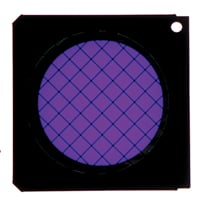
Are you ready to improve the performance of your infrared camera with Rosco’s Permacolor IR Pass dichroic filter? Contact your local Rosco dealer and let them know what tungsten fixture you want to use. We can size the #P7200 filter to fit any gobo holder, and we offer Permacolor Frames in standard 6.25”, 7.5” & 10” sizes that can be used with most traditional stage lighting fixtures. Once we know what light you’re using, we can provide the proper IR Pass filter for your installation.

